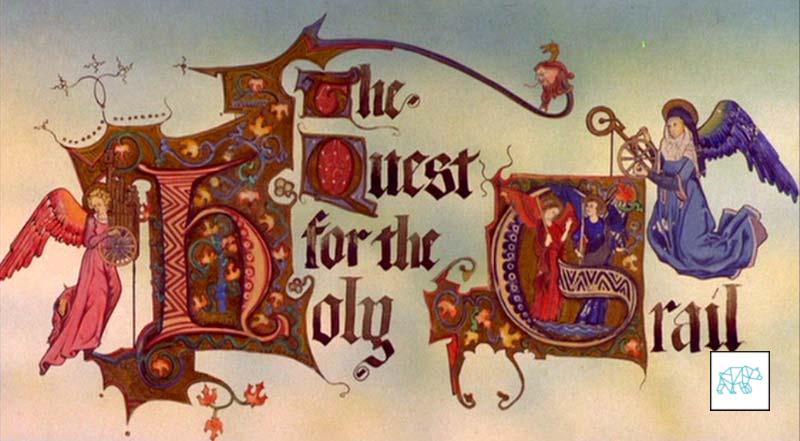
27 Nov The Holy Grail of Trading
The Holy Grail of Trading
I know I know. Clickbait tactics putting the title up as ‘The Holy Grail of Trading’. I hope though that by the end of this article you see that it actually is. Just not the way you thought it to be. Nothing in life worth getting comes easily. Especially in trading. There are many things one needs to ‘master’ about him/herself before one can master the art of trading. In this article I will describe the things I need to do to become a successful trader. The points that I will outline here are from a video I saw on YouTube. It’s by a guy called Dave Westgate. Please check out his YouTube channel as all credits go to him for making the video. Since he only has one video on his channel I will just link to that one. Watch the video on ‘The 20 habits of wealthy traders’ here. When I watched his video so many things clicked in my mind. Most of these points I had been thinking about myself and some were just lingering in a dark corner of my mind. Waiting to get addressed but by self-sabotage never got addressed the right way. So when I watched his video I decided I am going to use his video to help my progression. I thought it would be a good idea to keep it as 1. a manual with instructions on how to trade, and 2. a checklist to keep track of if I’m on track or not. I’ll explain more as I go along.
DISCLAIMER
Here it goes…
- Wealthy traders are patient with winning trades and enormously impatient with losing trades.
How often does a trade go against you and you keep telling yourself it will still turn around and go your way? I know I do that a lot. Instead, wealthy traders, cut their losses short and let their winners run. Be patient with your winners but very impatient with your losers.
- Wealthy traders realize that making money is more important than being right.
In the end, it is all about the money. You are not a charity giving your money to the markets. Not much of a charity either. When you see that a trade goes against you just get out. Same as number 1. Just get out. It is not about being right. It is about making money. The market is always right.
- Wealthy traders look at charts as a picture of where traders are lining up to buy or sell.
Since we are all watching at the same charts and we all have learned the same tools and indicators. That means many people will be looking at the charts with the same ‘goggles’ on if you will. This means that you can think how others might be thinking about the market and how they might be trading it.
- Before they enter any trade they know exactly where they will exit for either a gain or loss.
They follow their plan. They know when to get in and when to get out. You will find that many of these ‘habits’ are similar.
- They approach trade number 5 with the same mindset they did on the 4 previous losing trades.
It’s like in sales. You get many no’s before you get a yes. Same in trading. It’s about the numbers. In the end it is just about the statistics. Statistically speaking the market works in a certain way. SO if you keep doing the same thing every time, statistically speaking you will eventually get a win.
- They use “naked” charts and focus on zones.
This goes together with the book that I am currently reading called: “Naked Forex”. There are thousands of indicators that are derived from actual ‘naked’ price action. So if you can just understand price action then there’s no need for indicators. Just focus on the zones and you’ll see patterns.
- They realized a long time ago that being uncomfortable trading is OK.
They realized that they will never be winning all the time so there’s always a level of discomfort. I think that’s good since it keeps you on your toes and adds to the adventures of trading.
- The markets are their workplace. They are a participant — not an on-looker.
You have the right to be in the market and participate even though you aren’t as well-funded as say a hedge fund. Many people will give you a thousand reasons why you shouldn’t play the markets. And that’s OK. They are speaking from their own perspective of insecurity. If you tell them about a product you want to launch they would tell you the same. Ah it’s never going to work. You don’t have enough money to invest. The game is rigged. You know what I say? Good! The more people think like them the more special I am when I do succeed. And succeed I will.
- They stopped trying to pick tops and bottoms.
This is such a crucial one for me. I am so guilty of doing this many times. I keep thinking it has gone up far enough, it has to go down now. But more than not, it doesn’t. “SAD!” (Trump’s voice). SO the thing to do is to buy higher highs and sell lower lows. Just keep going with the trend.
- They stopped thinking about the market being “cheap” or expensive.
The only question that is important is: “Do I think the price is going to go up or down?”. You need prices to move in either way to make money. Prices are never cheap or expensive. They are just the price at that moment in time.
- They are willing to change sides if the market tells them to do so.
So just that you have established your bias in the morning doesn’t mean that bias can’t change for the rest of the day. If something happens in the market that alters the current trend. Change with it. Don’t be stubborn and hold onto your bias because you always need to be right. Remember, you’re here to make money.
- They trade aggressively when trading well and modestly when they are not.
Often times when you start losing in the market you start getting more aggressive trying to make up for lost money. This is not the way to do it. You’ll just make more mistakes. When things are going well you can be more aggressive. Be modest when they are going against you.
- They realize the market will be open again tomorrow.
‘We live in a world of abundance’ I believe Stephen Covey said in the 7 habits of successful people. The same applies here. The market will be open again tomorrow and it will provide enough opportunities to earn some money.
- They never add to a losing trade…. EVER.
As I mentioned before, many of these points are very similar. However, it is always good to point things out in a different way. When you are losing, just get out. Never EVER add to your already losing position. I know I have done this many times.
- Cash is the goal, but never the measure of success.
We are all here to make money. However, we should keep in mind that it is our plan that we should follow. We should always trade our plan and that is how we determine our success. Not by winning/losing money.
- They read books about mobs and riots.
Dave suggest in the video to read up on mass psychology. Because it is mass psychology that drives price action on the charts. The ones he suggests are:
- The wisdom of crowds, James Surowiecki
- Art of strategy, Avinash K. Dixit
- Markets, mobs, and mayhem, Robert Menshel
- They provide liquidity to the markets while watching price and volume.
As he says himself, he’s a bit vague on this because he can’t really put it in words. I think what he’s trying to say is that by mere participation they keep the markets going. Furthermore, they keep prices at the ‘right’ value. When prices soar to high than they’re actually worth they start selling, bringing prices down and vice versa.
- They have a way to gauge fear, greed and speed of the markets: tick charts 233, 612.
They have some way to see when something is up and represents more activity.
- They practice seeing the right side of the chart, not the left.
They practice seeing how the chart will develop in the near future based on past experience.
- Every wealthy trader has an “edge” they can explain to their mothers.
Be able to explain your trading to someone else in basic terms. Dave’s point is that if you can’t explain it to your mother in a way that she’ll understand it, you don’t have an edge. Thus not much of a plan.
- Their position size is calculated exactly on risk tolerance.
They don’t just have one position size that they use in every situation. In my personal experience when I have a better ‘understanding of the direction of the market combined with it’s volatility I might trade a bigger position size or less.
- Profit targets are based on average range or something objective.
This is very good. I used to just do 20 pips profit target and 10 pips stop loss. I was already feeling that I should just let the charts dictate where to go. Look at the average ranges to determine your take profit and stop loss.
- One or two trades a month, make their month.
You only need a few winners. You can have many losers but cut your losses short. Let your winners run and that’s how you make your month. Have confidence in your strategy and setup and trade only your plan.
- Confident decision makers in the face of incomplete information.
There is never room for indecision. A bad decision is always better than to not make a decision.
- A losing trade does not mean they are a loser.
They don’t take it personally. They know they traded their plan and that’s what they should be doing. A well performed plan is a win regardless of making or losing money.
- They buy the higher highs and sell the lower lows.
They don’t try to find the tops or bottoms. They go with the general trend and never swim against the current.
- Their business isn’t trading — it’s finding the right trades.
You are there to find your trades. Not to just trade whenever. This means that you can’t always trade. And that’s OK. You only trade your plan.
- They write down or record every trade — price, thoughts, news, attitude.
Look for patterns that are keeping you from trading well. Write them down and be conscious of them.
- Their conviction on an active trade remains unless something major changes.
Set it. Forget it. Take a position. Trust in it. Walk away from it. Often times this has worked for me. I just take a position and then stop looking. Now as an intraday trader this might become a little bit hard since we take many positions. But try it.
- A winning trade does not result in taking on extra risk on the next trade.
Just because you made some money that doesn’t mean you can risk more on the next. Always trade your plan.
- They trade the reaction — not the news.
Don’t trade the initial reaction, but the reaction to the reaction. For example when a trading session opens it doesn’t mean it will keep going that way. Wait to see what the reaction to the reaction is before participating in the move.
What does this mean for me?
What I am taking from this is a foundation for affirmations that I can tell myself before trading. Furthermore, it has given me a guideline to what criteria I can judge my own trading. I will focus on these points for a month and draw a conclusion of it. What did I do right, and what not. This way I hope to improve my trading. Please watch the original video by Dave Westgate here on YouTube.
Thank you
As always thank you for reading and please leave a comment if you have anything to add or to ask.





No Comments